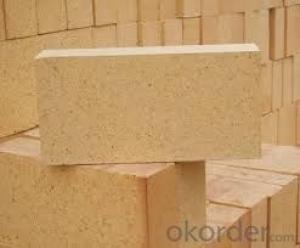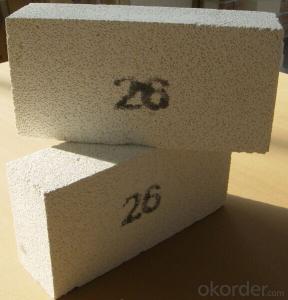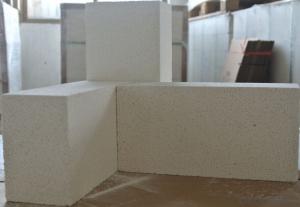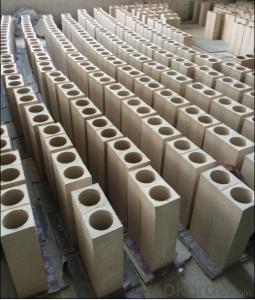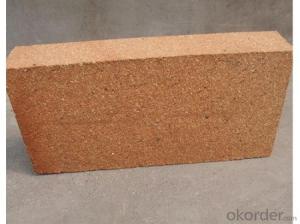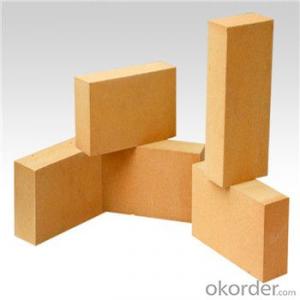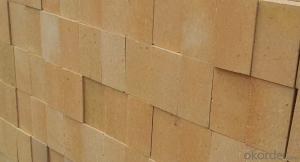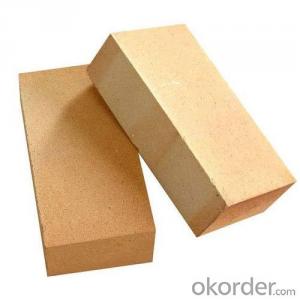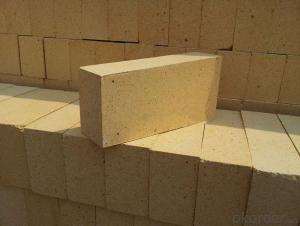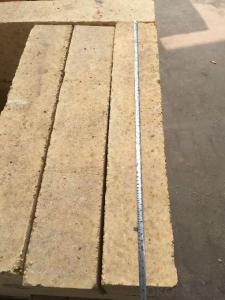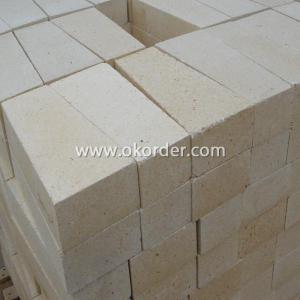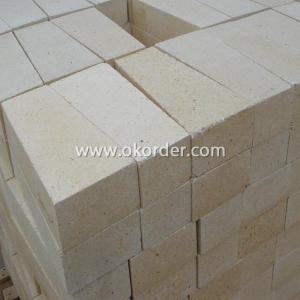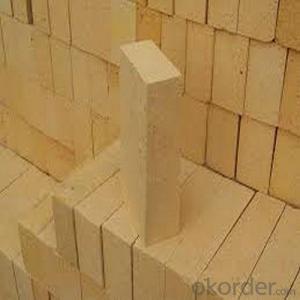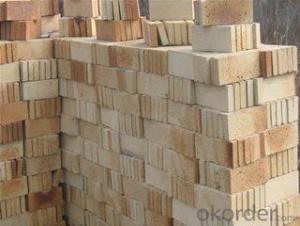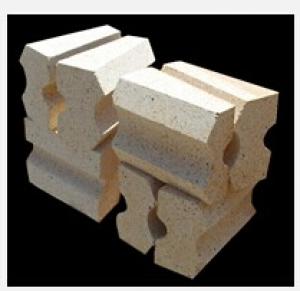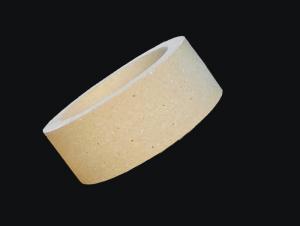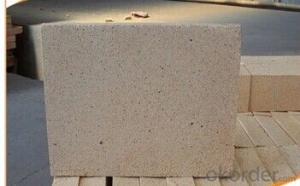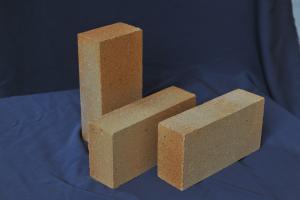Clay brick of refractory brick for blast furnace
- Loading Port:
- Qingdao
- Payment Terms:
- TT OR LC
- Min Order Qty:
- 2 m.t
- Supply Capability:
- 5000 m.t/month
OKorder Service Pledge
OKorder Financial Service
You Might Also Like
Brief discription for Clay brick of refractory brick for blast furnace
CMAX Clay brick of refractory brick for blast furnace are classified according to alumina content ranging from 48% to 90%.
CMAX Clay brick of refractory brick for blast furnace are commonly used in blast furnace, hot blast furnace, the roof of electric furnace, teeming ladle, rotary kiln,regenerator, etc.
Brief features for Clay brick of refractory brick for blast furnace
◆Low thermal conductivity
◆Excellent acid and base slagging resistance
◆High refractoriness
◆Excellent thermal shock resistance
◆Excellent mechanical strength
◆Good spalling resistance and wear resistance.
◆Good corrosion resistance.
◆High-temperature creep rate is quite low.
◆Good volume stability at high temperature.
◆Low bulk density, low thermal conductivity, good thermal insulation performance.
Technical data for Clay brick of refractory brick for blast furnace
ITEM | UAL48 | UAL55 | UAL65 | UAL75 | UAL80 | UAL85 | ALP80 |
Refractoriness, ℃ | 1750 | 1770 | 1790 | 1790 | 1810 | 1810 | 1810 |
Apparent Porosity,% | 22 | 22 | 23 | 23 | 20 | 20 | 18 |
C.C.S, Mpa | 39 | 44 | 49 | 53 | 55 | 60 | 100 |
Refractories Under Load (0.2Mpa),℃ | 1420 | 1470 | 1500 | 1520 | 1500 | 1520 | 1550 |
Reheating Linear Change,% | 1450℃x2h 0.1~-0.4 | 1500℃x2h 0.1~-0.4 | 1500℃x2h 0.1~-0.4 | 1500℃x2h 0.1~-0.4 | 1550℃x2h -0.5~+0.5 | 1550℃x2h -0.5~+0.5 | 1550℃x2h -0.5~+0.5 |
Al2O3 Content , % | 48 | 55 | 65 | 75 | 80 | 85 | 82 |
FAQ
Q1:Are you a manufacture or trader?
A:Factory+trade(mainly factories,at the same time,we operates other related products).
Q2:Can we visit your factory?
A:Sure,welcome at any time,seeing is believing.
Q3:What's the MOQ of trial order?
A:No limit,We can offer the best suggestions and solutions according to your condition.
Q4:Which payment terms can you accept?
A:T/T,L/C are available for us.
Q5:After an order is confirmed,when to deliver?
A:15-25days after deposit.
Q6:Can you offers samples?
A:Of coures,samples are free but freight paid by the buyers.
Q7:What is the service life of your bricks?
A:The service life of different bricks is unlike.It also depends on your using condition and method.
- Q:what should press on the heat preserving cotton above the suspended ceiling refractory brick ?
- you can also put Z shaped steel on the purline, put heat preserving cotton on the roof boarding, it is easy to oprate.
- Q:What is the meaning of the new type of dry rotary kiln refractory brick 620,320?
- It should be the length of the turn. I'm not sure if it is right.
- Q:th choose of different refractory bricks in the rotary?kiln
- According to the characteristics of each belt, magnesium chromium brick. Take the most kiln foe example, the configuration of kiln refractory is not the same, the burning of the product is not the same. there are many kinds of rotary kiln. magnesia bricks are generally used in high temperature zone, anti-stripping alumina brick,silmo brick are used in temperate zone, clay brick is mainly used in low temperature zone. generally inlet and the outlet use corundum mullite, wear-resistant castable, spinel brick,etc. select brick of proper performance, but also take into account the economy
- Q:What's the difference between fired clay bricks and sintered porous bricks?
- Clay, shale, coal gangue or fly ash as the main raw material, calcined by the hole rate of not less than 25%, the size of the hole is small and large number, mainly used for load-bearing parts of the brick, referred to as porous brick. At present, sintered porous bricks are divided into two types of P bricks and M bricks. As compared with ordinary clay bricks, sintered porous bricks have higher compressive strength, corrosion resistance and durability, as well as light weight and good thermal insulation performance. Sintered porous bricks can be widely used in load-bearing walls of industrial and civil buildings.
- Q:should clay or refractory cement be used to lay refractory bricks?
- structure strength of this brick lining is not good, apply some refractory mud, only use some virgin clay and corundum, many of the traditional approaches are very simple, mullite and carbon slurry, the specific products are selected according to the selected material and water glass or organic binder. binding agent can choose phosphate, silica and high alumina, clay is one part of the refractory clay, there are many kinds of refractory slurry according to the material, clay-based mud does use refractory cement and corrosion resistance is low
- Q:is it correct that the higher the refractoriness is, the better refractory bricks are?
- Does not necessarily, it has a great relationship with the compression and bending and corrosion resistance.
- Q:How to choose refractory brick
- According to the using environment of your product, process requirements, used place, refractory brick is very wide, there is low temperature, high temperature, there is heat insulation, there is wear resistant, corrosion resistance.
- Q:The shape and size of general used refractory brick
- 240mm * 115mm * 53mm. and the width is 115mm, the shape and size of mechanism red brick is: 230mm * 114mm * 65mm, the outline dimension of special refractory brick is of 65mm thickness according to the national standard: Length is 230mm. That is: Length is 240mm. General type refractory brick's outline dimension is of 114mm width. That is, thickness is 53mm: 345*328*97
- Q:How about clay bricks?
- The strength of brick can be judged by the sound produced by two bricks colliding with each other.Two hands each take a brick, gently hit, such as a uniform, crisp sound, indicating brick high strength, good quality, if the collision sound hoarse or stuffy, it shows that brick strength is low.2. to observe the crack state of bricks, elliptical repeat crack if large surface of the brick on the head, like twistcore, called "spiral brick"; some bricks will be broken, the shell off angle, crack and other symptoms, hand picked up the pieces of a pinch, immediately in powder form. The inner core is yellow and honeycombed. It is called "crisp brick", which belongs to the waste brick.3. to observe the color of brick brick brick section: open, heart was uniform black, no unburned carbon brick, high strength of such. On the contrary, the intensity is low.
- Q:Red brick (solid clay brick) has been banned, why do few people know?
- Because the brick hollow brick to heavy, made of the same height, weight heavier than the red brick building many hollow brick buildings, per unit area of the surface load is larger, directly lead to the design of building pile foundation, the column will also increase, lead to increased steel, cement and other building materials consumption, increase the cost of housing.
1. Manufacturer Overview |
|
|---|---|
| Location | |
| Year Established | |
| Annual Output Value | |
| Main Markets | |
| Company Certifications | |
2. Manufacturer Certificates |
|
|---|---|
| a) Certification Name | |
| Range | |
| Reference | |
| Validity Period | |
3. Manufacturer Capability |
|
|---|---|
| a)Trade Capacity | |
| Nearest Port | |
| Export Percentage | |
| No.of Employees in Trade Department | |
| Language Spoken: | |
| b)Factory Information | |
| Factory Size: | |
| No. of Production Lines | |
| Contract Manufacturing | |
| Product Price Range | |
Send your message to us
Clay brick of refractory brick for blast furnace
- Loading Port:
- Qingdao
- Payment Terms:
- TT OR LC
- Min Order Qty:
- 2 m.t
- Supply Capability:
- 5000 m.t/month
OKorder Service Pledge
OKorder Financial Service
Similar products
New products
Hot products
Related keywords
